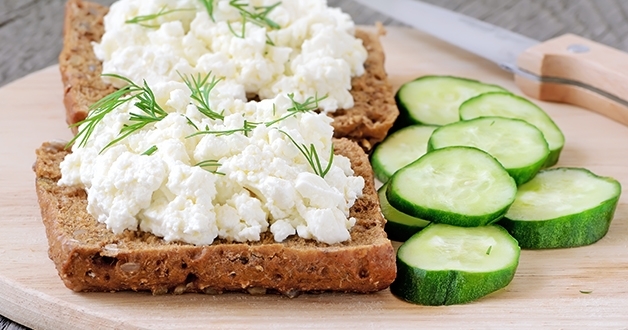
Curd cheese
1
1483
Types of curd
Depending on the way it is prepared, the curd is rusty or thermally cut. In the first case, rennet is a complex of enzymes released from the stomach of ruminants. It is usually dipped and germinated by microbial cultures. The second way is by heating and crossing whey or buttermilk.
The fat content of the product determines another subdivision - whole, semi-skimmed and defatted.
Health Benefits
The curd is a relatively good source of vitamin B2 and choline. In more limited amounts, vitamin A, E, B12, folate and pantothenic acid are also found.
Of the mineral elements, sodium is the most popular, followed by phosphorus and selenium. With 100 grams of curd, 8% (83 mg) of the recommended daily calcium intake, 3% (104 mg) of potassium and 2% (8 mg) of magnesium can still be obtained on average.
read more
The product has both omega-3 and omega-6 fatty acids. The relationship between them is in favor of the latter.
The curd is a product of low glycemic load. The only sugar it contains is lactose, and in small amounts, which makes it a preferred food for people with lactose intolerance.
Already processed cottage cheese is high in protein rich in essential amino acids. The amount of fat in the different product types varies.
Because of the above-mentioned benefits, the curd is widely popular and preferred in dietary and sports nutrition.
It is a good diet for dental health along with cheese.
Health risks
The curd is generally a safe product. Rich and protein content and the presence of a high percentage of sodium may be a problem for people with kidney problems - they can cause urine acidosis.
This is especially true of acid-truncated extracts (in which acids are also added). Kidney loading with these substances may make it harder to supply calcium and magnesium to the bones.
There is a link between the intake of dairy products, including curd, and the appearance of acne in teenagers.
Incorrect warming of the cut milk can be a cause of salmonella infection.
How to choose and preserve curd cheese
The quality curd should be uniformly colored, not too dry.
Like all cheeses, cottage cheese should be stored in the warmest shelves of the refrigerator and used for up to one week.
.


